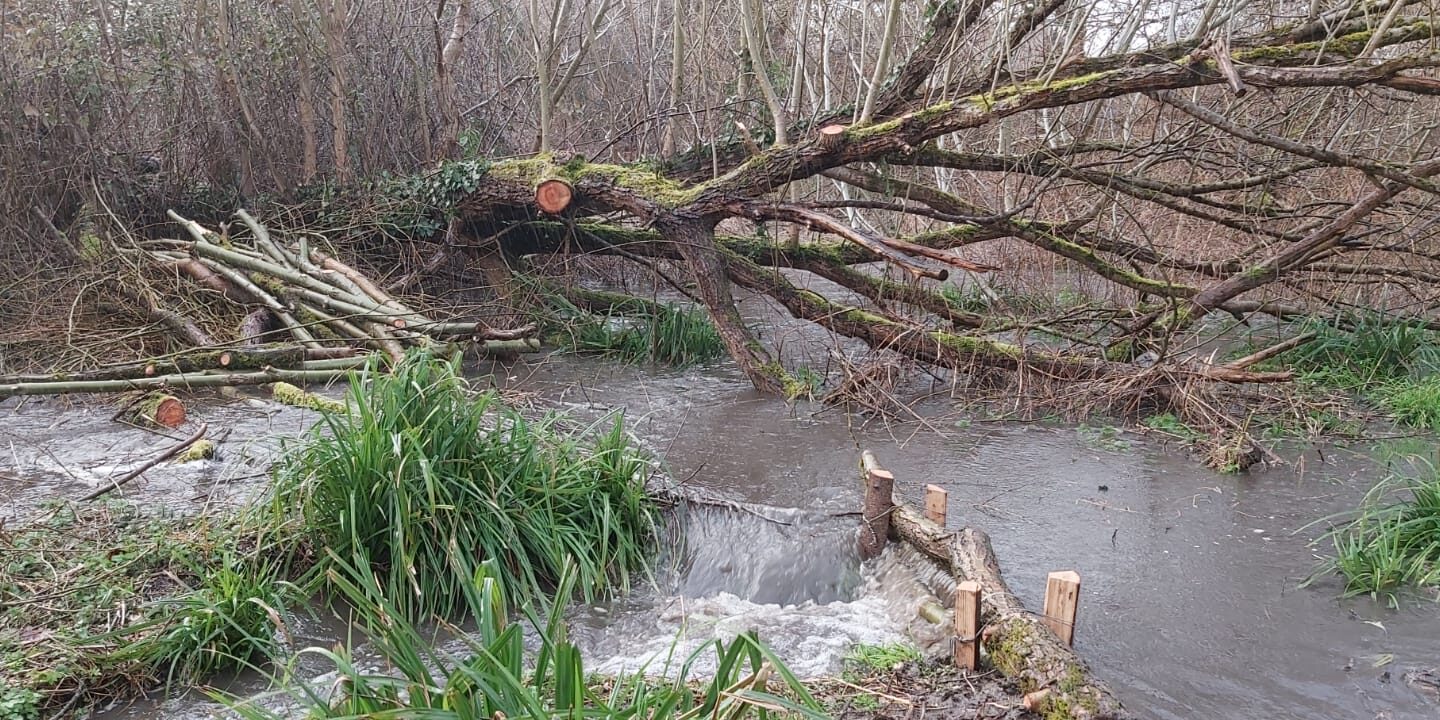BART have been busy implementing a Natural Flood Management scheme along the Patchway Brook and the Stoke Brook, both tributaries of the Bristol Frome river. BART have been delivering this work under the Resilient Frome partnership project, working with South Gloucestershire Council, the Environment Agency and Three Brooks Conservation Group to create leaky dams on the Patchway brook and a wetland area adjacent to Stoke Brook. The work took place in the Three Brooks Nature Reserve to help improve water quality, flow diversity and important habitats for fish and invertebrates.
Both brooks have been significantly modified and straightened over time. The over widened channel was once shallow and devoid of natural features, providing poor habitat diversity for aquatic life. BART designed a habitat improvement scheme; using coppiced material to build leaky dams in the river.
Woody debris (trees and their branches) are crucial and natural components of our river systems. Trees fall naturally into the water from the riverbanks, which then lodge into the channel or is carried downstream by the flow until it settles. Fish and invertebrates find refuge in the woody material, which also capture silt and sediment. This sediment would otherwise smother gravels and vegetation or would flow downstream.
Leaky dams and large woody debris were installed in strategic locations along along a small tributary of Stoke Brook to help slow the flow of surface water during peak rainfall events and increase connectivity of watercourses with their floodplains. Consequently, this creates wetland and wet woodland habitats where rivers have previously been disconnected due to human management of rivers. The leaky dams were constructed in a way that allows some water to ‘leak’ through the structure so that the watercourse does not become completely impounded. Coppiced material was stacked in the most natural way possible to blend in with the natural environment. The dams were secured in place using chestnut posts which were secured to the riverbed.
Along Patchway Brook, we worked with a local contractor to introduce a number of large trees into the watercourse in strategic, low-lying locations along the brook. By imitating natural tree fall across and into the channel, the woody material will hold back water during high flows, allowing the brook to fill its channel capacity and in places, reconnect the adjacent floodplain. The overspill of water into the surrounding woodland area will enable increased water storage capacity and encourage sediment deposition, reducing the sediment flowing downstream.
BART are working across the Bristol Avon catchment to restore our rivers and improve habitats for riparian wildlife. To find more about this project or others across the catchment, contact rozy@bristolavonriverstrust.org
Thank you to Resilient Frome for funding this project. We now look forward to continuing working with partners to build a wider programme of catchment restoration that includes further restoration, wetland creation, and Natural Flood Management measures during 2023-2027 via the Resilient Frome partnership programme, one of 25 projects supported by Defra’s Flood & Coastal Resilience Innovation Fund.








